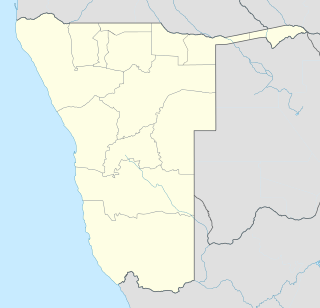
Under the Whyte notation for the classification of steam locomotives, 4-8-2 represents the wheel arrangement of four leading wheels, eight powered and coupled driving wheels and two trailing wheels. This type of steam locomotive is commonly known as the Mountain type.

Under the Whyte notation for the classification of steam locomotives, 0-10-0 represents the wheel arrangement of no leading wheels, ten powered and coupled driving wheels on five axles and no trailing wheels. In the United Kingdom, this type is known as a Decapod, a name which is applied to 2-10-0 types in the United States.

Under the Whyte notation for the classification of steam locomotives, 2-6-0+0-6-2 represents the wheel arrangement of an articulated locomotive with two separate swivelling engine units, arranged back to back with the boiler and cab suspended between them. Each engine unit has two leading wheels in a leading truck, six powered and coupled driving wheels on three axles and no trailing wheels.

The South African Railways Class 23 4-8-2 of 1938 was a steam locomotive.

The South African Railways Class 16E 4-6-2 of 1935 was a steam locomotive.
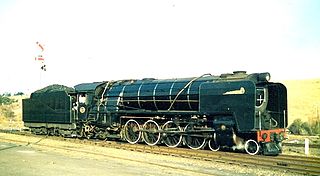
The South African Railways Class 15E 4-8-2 of 1935 was a steam locomotive.

The South African Railways Class 15C 4-8-2 of 1925 was a steam locomotive.
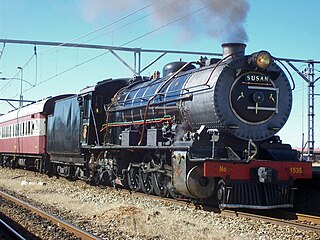
The South African Railways Class 12A 4-8-2 of 1919 was a steam locomotive.

The South African Railways Class 3 4-8-2 of 1909 was a steam locomotive from the pre-Union era in the Colony of Natal.
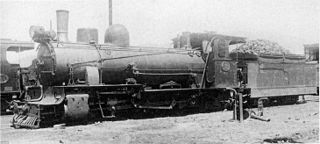
The South African Railways Class NG5 2-8-2 of 1922 was a narrow-gauge steam locomotive.
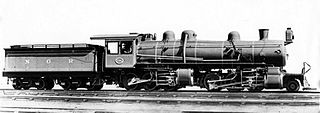
The South African Railways Class MA 2-6-6-0 of 1909 was a steam locomotive from the pre-Union era in the Natal Colony.
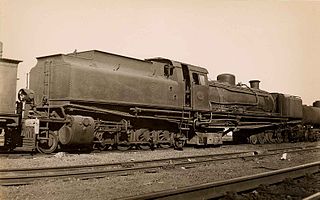
The South African Railways Class HF 2-8-2+2-8-2 of 1927 was an articulated steam locomotive.
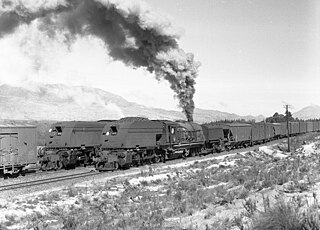
The South African Railways Class GEA 4-8-2+2-8-4 of 1946 was an articulated steam locomotive.

The NZASM 40 Tonner 0-6-2T of 1892 was a South African steam locomotive from the pre-Union era in Transvaal.

The South West African 2-8-0T of 1907 was a steam locomotive from the German South West Africa era.

The South West African 2-8-0 of 1911 was a steam locomotive from the German South West Africa era.

The South West African Class Ha 0-6-2T of 1904 was a steam locomotive from the German South West Africa era.

The South West African Class Hc 0-6-0T of 1907 was a narrow gauge steam locomotive from the German South West Africa era.

The South African Railways Class 16DA 4-6-2 of 1930 was a steam locomotive.
The South West African 0-6-0T of 1911 was a steam locomotive from the German South West Africa era.





